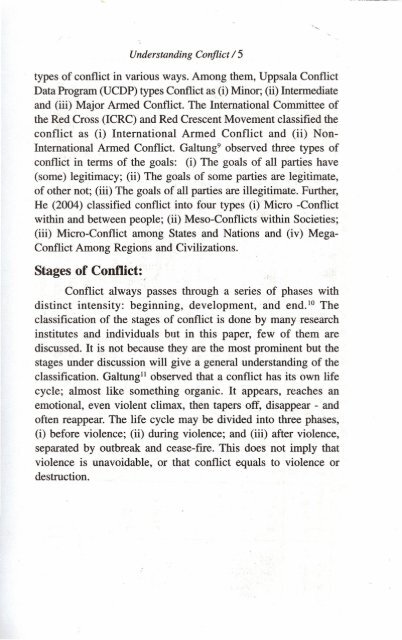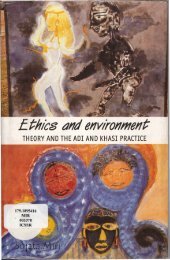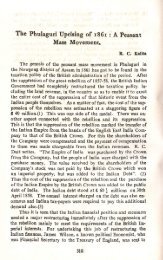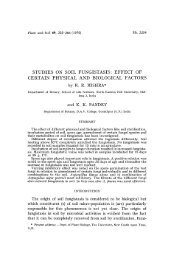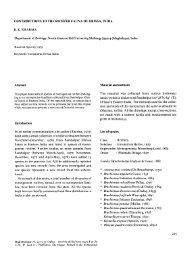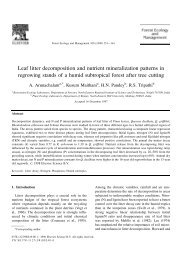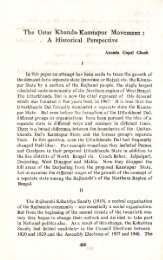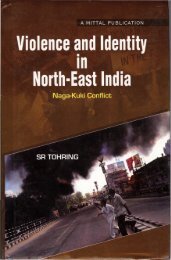Removing the veil.pdf - DSpace@NEHU
Removing the veil.pdf - DSpace@NEHU
Removing the veil.pdf - DSpace@NEHU
Create successful ePaper yourself
Turn your PDF publications into a flip-book with our unique Google optimized e-Paper software.
Understanding Conflict / 5<br />
types of conflict in various ways. Among <strong>the</strong>m, Uppsala Conflict<br />
Data Program (UCDP) types Conflict as (i) Minor; (ii) Intermediate<br />
and (iii) Major Armed Conflict. The International Committee of<br />
<strong>the</strong> Red Cross (ICRC) and Red Crescent Movement classified <strong>the</strong><br />
conflict as (i) International Armed Conflict and (ii) Non-<br />
International Armed Conflict. Galtung? observed three types of<br />
conflict in terms of <strong>the</strong> goals: (i) The goals of all parties have<br />
(some) legitimacy; (ii) The goals of some parties are legitimate,<br />
of o<strong>the</strong>r not; (iii) The goals of all parties are illegitimate. Fur<strong>the</strong>r,<br />
He (2004) classified conflict into four types (i) Micro -Conflict<br />
within and between people; (ii) Meso-Conflicts within Societies;<br />
(iii) Micro-Conflict among States and Nations and (iv) Mega-<br />
Conflict Among Regions and Civilizations.<br />
Stages of Conflict:<br />
Conflict always passes through a series of phases with<br />
distinct intensity: beginning, development,· and end.'? The<br />
classification of <strong>the</strong> stages of conflict is done by many research<br />
institutes and individuals but in this paper, few of <strong>the</strong>m are<br />
discussed. It is not because <strong>the</strong>y are <strong>the</strong> most prominent but <strong>the</strong><br />
stages under discussion will give a general understanding of <strong>the</strong><br />
classification. Galtung" observed that a conflict has its own life<br />
cycle; almost like something organic. It appears, reaches an<br />
emotional, even violent climax, <strong>the</strong>n tapers off, disappear - and<br />
often reappear. The life cycle may be divided into three phases,<br />
(i) before violence; (ii) during violence; and (iii) after violence,<br />
separated by outbreak and cease-fire. This does not imply that<br />
violence is unavoidable, or that conflict equals to violence or<br />
destruction.


